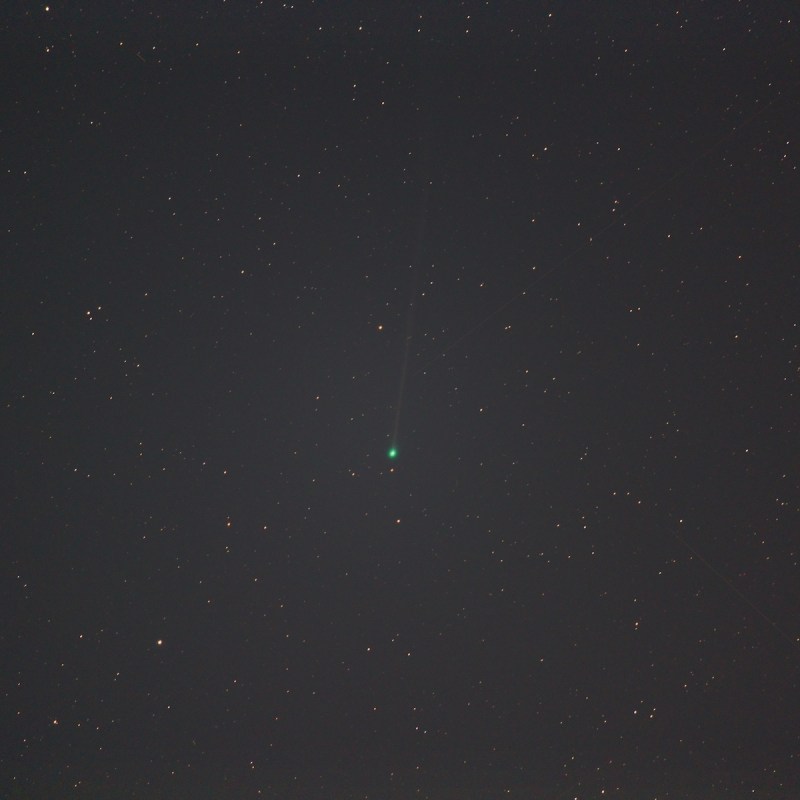
Note: The Travel Awaits team regularly updates content to provide the latest, and most accurate information to our readers. The updated content in this article may not reflect the views or opinions of the original author.
Stargazers take note: You’ll soon have a few chances to see a newly discovered comet as it passes Earth on its orbit of the Sun.
The Calendar of Comets in 2024
Here’s the calendar of all comets that could be visible by the naked eye, through binoculars, or a telescope in 2024:
DEC 25, 2023: 62P/Tsuchinshan
62P/Tsuchinshan is a short-period comet and one of the first comets to kick off the year that should be visible with medium-size binoculars.
JAN 25: 144P/Kushida
144P/Kushida is a well-placed evening comet but visibility forecasts for this short-period comet are unfavorable.
FEB 14: C/2021 S3 (PanSTARRS)
C/2021 S3 (PanSTARRS) is a short-period comet coming across the Coathanger Cluster, that might be visible with small binoculars.
APR 21: 12P/Pons-Brooks
Comet Pons-Brooks comet is a Halley-type comet that hasn’t been seen in seventy years. Comet Pons-Brooks will likely be weaker than C/2023 A3, and only faintly visible to the naked eye. However, there is a chance that the bright comet could become significantly brighter than expected if it has an ‘outburst’.
SEP 27: C/2023 A3 (Comet Tsuchinshan-ATLAS)
Comet Tsuchinshan-ATLAS can potentially become an exceptionally bright comet and earn the title of a “great comet”. It might become visible to the naked eye and rival the luminosity of the brightest stars in September and October.
Comets in 2023
The comet, C/2023 P1, or simply Comet Nishimura, will pass Earth on September 12, 2023. It will be 78 million miles from Earth at that time and should be bright enough to see with the unaided eye beginning before dawn on September 8, according to EarthSky.
The comet will then reach perihelion — its closest point to the Sun — on September 17.
You won’t want to miss the comet as it passes Earth, however. Astronomers calculate that Comet Nishimura’s orbit of the Sun takes 435 years.
All About Comets
Comets can be thought of as giant snowballs made of frozen gasses with embedded rock and dust particles, NASA explains. They typically are roughly the “size of a small town.”
Comets, celestial wanderers in our solar system, captivate astronomers and skygazers alike. These icy bodies originate from the outer reaches, often residing in the Oort Cloud or Kuiper Belt. When a comet approaches the inner solar system, it may become visible from Earth, offering a spectacular celestial display.
Meteor showers, equally interesting celestial events, result from Earth intersecting with the debris trails left by comets, producing dazzling streaks across the night sky. Unfortunately, light pollution in urban areas, particularly in the northern hemisphere, can obscure these celestial wonders.
Observatories like the Purple Mountain Observatory play a crucial role in studying comets and mitigating the impact of full moon interference, providing valuable insights into the mysteries of our inner solar system.
Bright comets like Tsuchinshan-Atlas, or other comets can be observed with a small telescope, enhancing our understanding of these cosmic visitors.
As a comet nears the Sun, it warms up and its ice begins to change from a solid to a gas. This produces what’s known as a “coma,” which is the fuzzy-shaped cloud surrounding the ball of ice. The coma can be thousands of miles in diameter.
Then, radiation pressure — or solar wind — “blows” the expanding coma out to form the long tail that gives comets their distinctive shape.
The New Comet
Amazingly, the new space object was discovered by Japanese amateur astronomer Hideo Nishimura on August 12, while he was taking pictures of the night sky, Space.com explains. The object was then officially confirmed and named comet C/2023 P1 on August 15 by the Minor Planet Center.
Astronomers divide months in half — days 1 to 15 and days 16 to a month’s end — in what’s known as “half-months” to name newly discovered solar-system bodies such as comets and asteroids. These half-months are then labeled as the successive letters of the alphabet. Early January, for instance, is “A.”
The new comet’s 2023 P1 name designates that it was discovered in 2023, in the first half of August, and that it was the first such object discovered in that time period. It is commonly called Comet Nishimura to recognize its founder. Another comet, that passed us in January in 2023 was named Green Comet.
How To See The Comet
The good news is that Comet Nishimura continues to be brighter as it nears Earth.
While the comet will be its closest to Earth on September 12, astronomers believe it should be visible to the unaided eye beginning September 8, SpaceSky explains.
Now, for the bad news, while the comet is expected to be visible about 90 minutes before sunrise, it may be challenging to see just above the eastern horizon due to glare from the impending sunrise, EarthSky notes. The comet will be a little more difficult to spot each morning after September 8.
That said, here’s how to look for Comet Nishimura on September 8 and for mornings after that: Look for the comet before dawn above the eastern horizon. Comet Nishimura will be near the Moon and Venus.
If you’d like some visual aids, the Star Walk 2 app, the Sky Tonight app, and illustrations of the night sky on EarthSky can help you determine where to look in the predawn sky, as well as what you should look for.
Finally, as is always the case with stargazing, your chances of seeing the comet will be better if you are far away from city lights and have an unobstructed view of the eastern horizon.
You should keep an eye out for another comet coming our way named Tsuchinshan-ATLAS.
FAQs
What Comet Comes Every 50,000 Years?
The C/2022 E3 (ZTF) takes around 50,000 years to orbit the sun. The comet was discovered by researchers using the Zwicky Transient Facility, a special camera at Caltech’s Palomar Observatory. It was last visible in early February 2023.
What Rare Comet Will Pass by Earth in 2024?
The comet 12P/Pons-Brooks called the “devil comet”, will pass by Earth for the first time in 70 years. It got its nickname because of two ice and gas formations that mimic the shape of horns. The last time the comet was visible to us was in 1954.
What Is Going to Be the Brightest Comet in 2024?
The comet in question is C/2023 A3 (comet Tsuchinshan–ATLAS). If it lives up to its most optimistic expectations, it could appear as bright as a first or second-magnitude star and might show a significant tail despite the low altitude and bright moonlight.
What Are the Three Most Famous Comets?
The most well-known comet is Halley’s Comet found by Edmond Halley and visible every 75 to 76 years. The other two famous comets are Comet Hale-Bopp, named after its co-discoverers, and Comet Shoemaker-Levy 9, named after its discoverers, Gene and Carolyn Shoemaker, and David Levy.
Where Do New Comets Come From?
Evidence suggests that there are two regions of the outer Solar System producing new comets. The first of these regions is the Kuiper Belt, a band of comets. The second region, farther out than the Kuiper Belt, is called the Oort Cloud.
